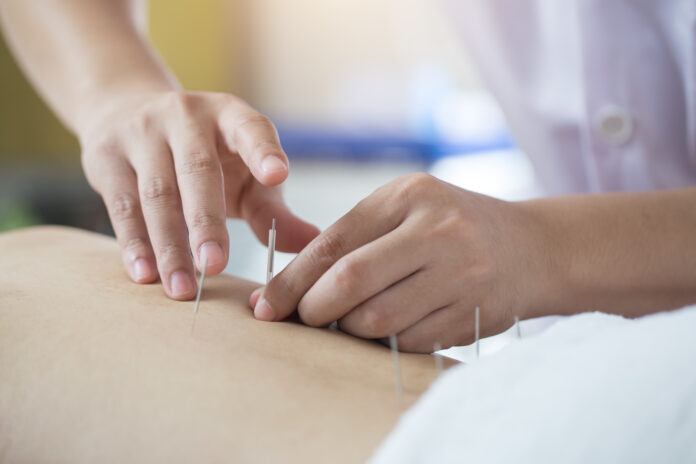
ByDavid Lee, L.Ac.
Have you often wished your acupuncture system can be simplified while patient satisfaction is exponentially increased? Just like you, I have wondered about it constantly in the first 10 years of my practice hoping that it will get easier over time. The answer was a resounding yes! Bisoma acupuncture is very simple to use while still highly effective. Bisoma in Greek means two bodies because it treats at the constitutional level. Since there are only two sets of 5-point prescriptions for treatment of a wide variety of pain and dysfunction, a disease diagnosis is not necessary. If one set of 5 points do not provide relief, then the other 5 points do. Furthermore, it is so user-friendly that it is scientifically measureable, predictable, and repeatable. Yes, you can have the cake and eat it, too. Add some whip cream and a cherry on top while you are at it.
The best is that Bisoma acupuncture requires utilization of only 10 Transporting Shu points. To have it even better, manipulation technique is not necessary. Only tiny acupuncture needles 0.20 mm x 0.15 mm needles are enough even for larger patients. Bisoma acupuncture relieves pain for a wide range of acute and chronic health problems that acupuncture is known to treat, such as asthma, allergies, muscle-joint pain, chemical dependency, anxiety/depression, hot flashes, migraine, neuropathy, and vertigo. Improvement of the patient’s condition has been shown to be immediate and dramatic. In addition, multiple patients can be treated at one time without compromising efficacy. Due to the ease of learning about and implementing Bisoma acupuncture, clinical observation shows it can be utilized to treat anyone, anywhere.
The first set of 5 horary points LI1 (metal), UB66 (water), GB41 (wood), SI5 (fire), and ST36 (earth) apply to the 70% of population. Since these points are ingrained in the individual from birth, it retains the same relevancy through one’s lifetime. This means these same acupuncture points will be effective for a person’s variety of problems from childhood to old age.
The second set of horary points GB44 (wood), SI2 (fire), ST43 (earth), LI5 (metal), and UB40 (water) apply to 30% of the population. “Wait a minute! These are not horary points”, you may say. These points are horary points from the perspective of the five-element order that begins with Wood on the yang meridians at the Jing-Well points, just as yin meridians do. Therefore, the new horary points are GB44 (Wood, Jing-Well), SI2 (Fire, Ying-Spring), ST43 (Earth, Shu-Stream), LI5 (Metal, Jing-River), and UB40 (Water, He-Sea). These alternate labeling of five-element points were proposed by Lee Dongwoong in his text Physical Constitution by Yin-Yang Theory, published in 1999.
|
Horary for 70% of population |
Horary for 30% of population |
|
Large Intestine 1 |
Gall Bladder 44 |
|
Urinary Bladder 66 |
Small Intestine 2 |
|
Gall Bladder 41 |
Stomach 43 |
|
Small Intestine 5 |
Large Intestine 5 |
|
Stomach 36 |
Urinary Bladder 40 |
After giving acupuncture to more than 5,000 patients for more than 50,000 treatments over a 15-year period at my Los Angeles suburb clinic, 30% of the population is clinically verified to have this alternate five-element order instead of the traditional order. When the traditional order did not work, the alternate order was significantly helpful. In addition, other acupuncturists are achieving the same outcome. Once you see the result for yourself, you will become a believer. It will not only open the possibility of making your patients and pocket happier, but will also accelerate the acceptance of acupuncture by both the public and medical establishment.
Although these points are a stand-alone protocol, which is enough to give a phenomenal relief to your patients, you can still add your favorite points. You do not have to give up your own hard-earned acupuncture know-how. You can integrate your experience with this new knowledge. Medicine continues to evolve. Acupuncture is no exception. It is those who dare to think differently and try the out-of-the-box approach sometimes make a discovery of the century. This is one of those treasures.
But Bisoma does not just stop there. It is a gateway into constitutional medicine, which integrates Korean Sasang Four-constitutions Medicine, Korean Eight-constitutions Acupuncture, Unani’s Greco-Roman Four Temperaments, Indian Ayurveda, and American Myers-Briggs 16 Personality Types. Your success with Bisoma will take you wide and deep into the medicines of the world, helping you see the unity in and underlying commonality between them. Like Alice in Wonderland, you will enter the rabbit hole to discover timeless truths and secrets of the universe.
Korean physician Jema Lee foresaw constitutional medicine practiced commonly by the masses. He expressed this wide-spread acceptance in his text Longevity and Life Preservation in Eastern Medicine, published in 1894. Contrarily, Traditional Eastern Medicine treated a human being as a well-balanced blank slate, which after birth became imbalanced by the external climatic forces. Constitutional medicine views human beings as inherently imbalanced prior to birth and climatic factors are not necessarily the cause of a disease. Bisoma acupuncture addresses the human at the level of epigenes, allowing the individual to holistically rebound at the fundamental level. Empowering the individual sets the tone for autonomy and freedom. By going deeper at the constitutional level, Bisoma acupuncture is part of our history of human enhancement through optimizing the individual’s particular strengths and improving upon the weaknesses.
































